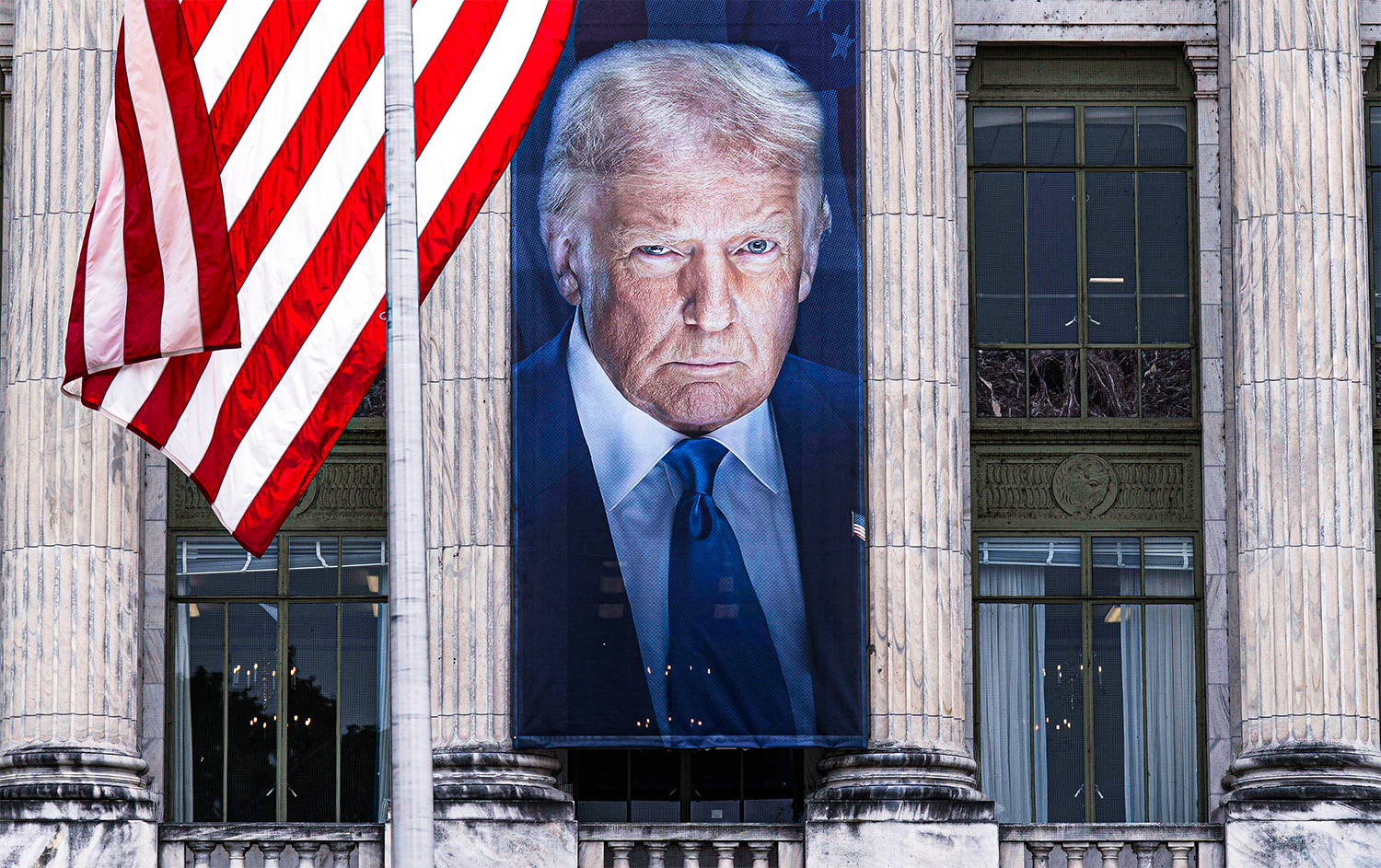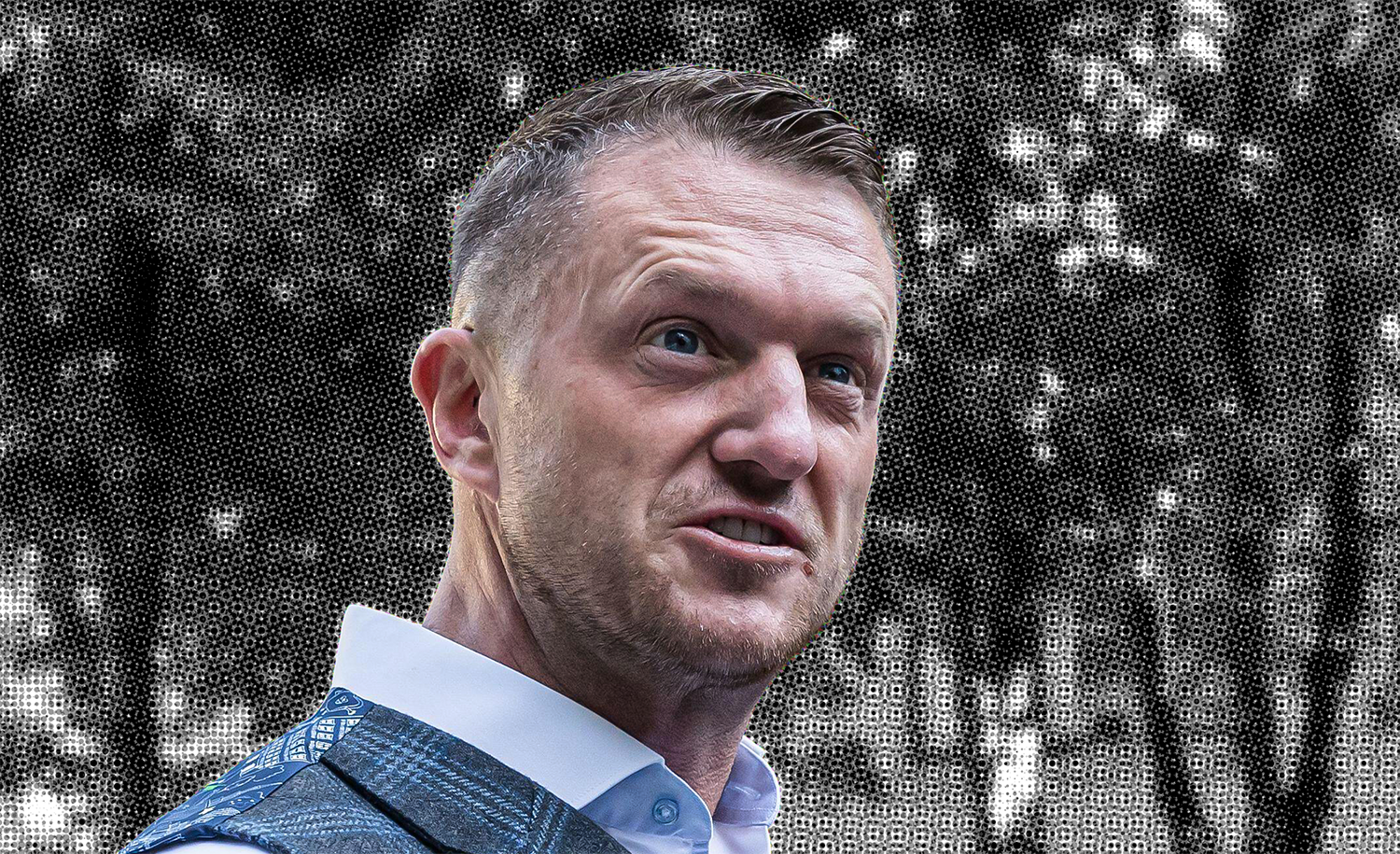Support our mission to provide fearless stories about and outside the media system
Packed with exclusive investigations, analysis, and features
“When government fears the people, there is liberty. When the people fear the government, there is tyranny.”*
[*Quotation often attributed to Thomas Jefferson, though academics query its provenance.]
Amidst the madness of Trump’s second term, each week’s outrage obscures last week’s outrage. Some say this is a deliberate White House strategy, to keep critics off-balance, and struggling to come up with effective opposition strategies.
The constant chaos allows quieter outrages to go virtually unnoticed, including the numerous firings of government officials seen to have crossed the administration. In August alone this included the head of the Defence Intelligence Agency, Lt. Gen Kruse, who had produced an assessment that the US attacks on Iran had only set back Teheran’s nuclear programme by a few months, and the Commissioner of Labor Statistics, Erika McEntarfer, for failing to produce a sufficiently glowing report on job numbers. In June, Health Secretary Robert Kennedy Jr fired every member of the CDC Vaccine Advisory Panel.
This week, the administration put on administrative leave dozens of staff from the Federal Emergency Management Agency (FEMA) who had signed a letter to Congress criticizing the administration’s budget cuts to disaster preparedness.
Now the administration is attempting to fire Federal Reserve Governor, Lisa Cook, in a blatant effort to pressure the Board to reduce interest rates – setting up a major legal battle, likely to reach the Supreme Court, over the extent and limitations of executive power.
The constant drama also helps drown out unhelpful stories – such as the scandal surrounding the nature of Trump’s association with Jeffrey Epstein. This dominated the news through summer, until attention turned to his frenzied, but futile, efforts to bring the leaders of Russia and Ukraine together for peace talks.
Earlier events, such as Elon Musk’s catastrophic tenure at DOGE, the dismantling of USAID, or the “liberation day” announcement of tariffs on America’s trading partners, seem like distant memories, though their harmful effects remain to this day.
In the past two weeks, the top story has been Trump’s decision to deploy the National Guard in Washington DC, and establish federal control over the city’s police department, allegedly to restore law and order in the city. As of writing, over 2,000 armed national guard troops are now patrolling the city’s streets, bolstered by hundreds of federal agents.
On 25 August, Trump issued another executive order tasking the Secretary of Defence to create and train a special unit to enforce federal law in the city, and ensure the “availability of a standing national guard quick reaction force” available for deployment nationwide.
He has threatened to deploy similar units to other Democrat-led cities, such as New York, Chicago and Baltimore, though he has far less authority to do so in states run by Governors. He also conspicuously omitted major cities with similar levels of crime under Republican control.
Earlier this week I visited two parts of the city where there has been a major increase in federal presence, to get the reaction from local residents. Their accounts were deeply disturbing.
In Mount Pleasant, one of Washington’s most diverse neighbourhoods, with a historically large Hispanic population, residents told me that the entire community was agitated and uneasy. Plain-clothed, masked ICE agents had been seen in several locations, including outside a food distribution site run by a local church, and outside schools. A parent at the local school told me that volunteers had formed safety patrols to escort young kids to and from school, to try to reassure them, and protect their parents from being detained.
Parents and staff clustered in corners, whispering, and devising strategies to protect each other. Hispanic kids would no longer go out on playdates. One of her friends, an attorney, was having to visit her clients in their houses, and spend much of her time drawing up Power of Attorney documents, in case any parent in the home was detained.
Other residents told me of ugly clashes with ICE agents trying to seize suspected immigrants off the streets, or tear down posters criticizing the Trump administration’s policies. The manager of a day care center told me she was too scared to let her staff go outside. Another resident told me that day laborers who used to gather looking for work near his house had completely disappeared.
I heard similar stories from a resident near Capitol Hill, a gentrifying district behind Congress, in a historically African-American neighbourhood. ICE agents and Metropolitan police units had been showing up in greater numbers outside schools in order to try to nab teachers with undocumented status. As in Mt Pleasant, local volunteers had created safety patrols in response. Her son’s local nursery had had to send out guidance to all staff and parents before the first day back at school to notify them of their rights, should ICE agents attempt to enter their property, or detain any individual. On some days, the staff were too scared even to take the kids to the playground, because police and ICE agents were lying in wait for them there.
Even citizens with genuine IDs were being taken into custody and told their identification was fake. Federal agents were also harassing homeless people and young black men. In one recent incident, day laborers had been seized outside a local Home Depot (a major DIY store), including the father of a ten-week old baby.
In her cover note to parents, the owner of the nursery wrote “As a lifelong Washingtonian, citizen and mother of young Black men, I don’t feel that our city is safe for my teens. None of us who are of color feel safe and wanted in our city.”
The resident said relations with the local police had become severely frayed. Tensions had skyrocketed within the community. It was like living in an authoritarian country. She felt “scared and intimidated” all the time. She was so overwhelmed by what was happening in her immediate neighbourhood, and to her family (she has a professional background in human rights and democracy, and was struggling to stay true to her core values at work, her husband was one of those laid off from USAID) that it was hard for her to focus on the bigger picture – “the big, fascist, authoritarian thing.”
It was a collective struggle, since events like this were happening across America, but also a deeply personal one, to keep one’s own life together. American democracy needed a radical reboot – it was no longer enough to tinker with small changes at the margins. But she worried that Americans were not seeing how big this moment was.
Near Washington’s main train terminal, Union Station, where National Guard troops regularly patrol, a group of army veterans had joined a local protest group to signal their opposition to Trump’s actions. They told me that while crime might had gone down slightly in the city since Trump’s decree, that was largely because there were fewer people out and about. Food truck vendors had all but disappeared from the main tourist sites, because people were keeping away. They had fought “fascism” overseas, and were prepared to do the same at home. More and more people were being mobilized to resist.
I also joined an online event organized by #FREEDC – a campaign group established to “protect Washington DC’s Home Rule and win “dignity” for its people. Participants expressed their frustration with Washington’s status as a federal district short of statehood, without elected representation in Congress, and with limited self-governance, which gave Congress authority over its laws and budget. A #FREEDC campaigner described how this created a democratic vulnerability, because in other countries the capital city was typically the place where protests and dissent, and struggles for power, would take place. But DC residents’ lack of basic rights hampered their ability to resist, or to act as the wider nation’s focal point.
#FREEDC felt they were already seeing all the classic tactics of an authoritarian takeover – the stoking of fear and chaos to keep people off balance; threats and intimidation to get people to obey in advance; the weaponization of sub-groups to create division. #FREEDC’s aim was to get as many people as possible to engage in non-violent civic resistance. Studies had shown that it only took 3.5% of a population to be willing to mobilize and engage in “strategic non-cooperation” to win. That meant only 24,500 people in DC – an attainable number.
ENJOYING THIS ARTICLE? HELP US TO PRODUCE MORE
Receive the monthly Byline Times newspaper and help to support fearless, independent journalism that breaks stories, shapes the agenda and holds power to account.
We’re not funded by a billionaire oligarch or an offshore hedge-fund. We rely on our readers to fund our journalism. If you like what we do, please subscribe.
I came away from these conversations feeling shocked to my core. In my 33 year diplomatic career, I only ever saw armed police or paramilitary troops out in force in their nation’s capital on three occasions – once, during a military crackdown on protesting students in Burma in 1988, once following a military coup in Thailand, in 1992; and the third time, in Tbilisi, Georgia, to suppress pro-democracy protests following flawed elections in 2024 – a security clampdown which continues to this day.
It’s surreal to witness the nascent elements of a similar authoritarian takeover in Washington DC, the capitol of supposedly the world’s leading democracy. It may not yet be at the stage of an actual coup, but the groundwork is being laid – in the dismissal of honest government servants, the installation of loyalists at the head of every government department or agency, the threat of budget cuts to any body or institution which criticizes or offers opposition to the administration, the bullying and intimidation of the media, universities, law firms, and the arts sector, the weaponization of federal contracts to woo or cow business leaders, the actual or threatened deployment of federal troops in major cities, and the recent executive order directing the Defense Department to create special, rapid response, units which could be deployed “nationwide.”
All it will take is for some incident to spiral out of control – a major riot against an immigration raid, the shooting of some innocent bystander, a civil resistance movement which successfully impedes government operations, for Trump to have the perfect pretext to declare a national emergency, meaningfully enhancing his executive powers. He has already declared eight emergencies in his second term, including an emergency at the southern border, an energy emergency, and an economic emergency, allowing him to enact far- reaching policies bypassing Congress, such as sweeping tariffs.
Under US law, a US President can declare a national emergency at any time, without approval from Congress, and without any legal definition as to what constitutes “an emergency”. According to Elizabeth Goitein of the Brennan Center for Justice, under a national emergency, Trump could in theory use his powers to control the internet, take over tv channels, or freeze the assets of American citizens deemed to be “hostile foreign actors”, without judicial oversight.
According to Brennan, there are very few limits on how and for how long a US President can use such powers. A bill is before Congress which would require presidential emergency declarations to expire automatically after 30 days unless Congress voted to approve it – but, she notes, there’s very little bipartisan legislation passing this Congress.
It seems far-fetched, but everyone – literally everyone – I spoke to this week, told me they believe such a scenario is possible, or even likely. If people are scared, they have mounting reasons to be so.


